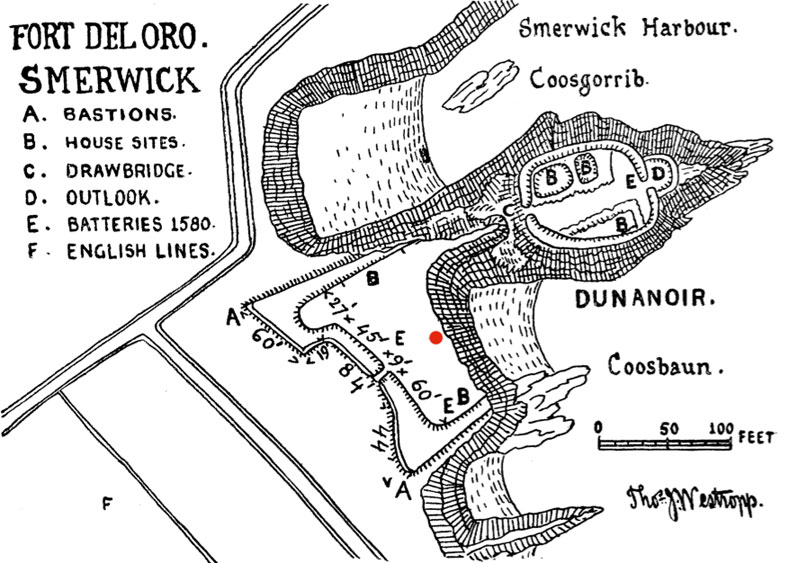Cruelty in the wild west of Ireland
/Part 2 in the series: How I found the snow path to Dingle At the end of my last post, I began the adventure to discover the meaning of the phrase in my head, "the snow path to Dingle" which ultimately led to the book Sharavogue. Where else could my research begin, but Dingle? Many tourists to Ireland venture out on this far-west peninsula, but if you have never been there it is an amazing mix of sugar-white beaches, dark clumpy bogs, castle ruins, rocky mountain passes, harbor towns with fishing boats bobbing on the water, lush green pastures, lively pubs and gourmet restaurants tucked amid colorful village shops and businesses. Most would never guess the horrors that once took place there.
I started my research on the Internet, but this was several years ago and the web was not the robust information resource that it is today. Still, one of the first things I found was the story of the Seige of Smerwick. According to one source:
Smerwick was originally a Viking settlement and its name originates from the Norse words ‘smoer’ and ‘wick’ meaning ‘butter harbour’. Although denoted as Smerwick on charts the area is now officially known by the Irish name ‘Ard na Caithne’, meaning ‘height of the arbutus’ or strawberry tree.
 It is a sweet name that helps to obscure a bitter past. In 1580, 600 Italian and Spanish troops landed here, funded by the Pope to aid a rebellion against English forces in Ireland. The garrison became isolated on a narrow tip of the peninsula, with English artillery on the land side and naval forces on the sea. Earl Gray laid seige to the garrison and their defenses crumbled after three days. Gray rejected their request for terms, insisted on unconditional surrender, then sent his bands in to execute the 600, sparing only those of higher rank. The soldiers were beheaded, their bodies flung into the sea and their heads buried in a field. The ranking offers were offered life if they renounced their Catholic faith, and if they did not their legs and arms were broken in three places, they were left to suffer for a day, and then hanged.
It is a sweet name that helps to obscure a bitter past. In 1580, 600 Italian and Spanish troops landed here, funded by the Pope to aid a rebellion against English forces in Ireland. The garrison became isolated on a narrow tip of the peninsula, with English artillery on the land side and naval forces on the sea. Earl Gray laid seige to the garrison and their defenses crumbled after three days. Gray rejected their request for terms, insisted on unconditional surrender, then sent his bands in to execute the 600, sparing only those of higher rank. The soldiers were beheaded, their bodies flung into the sea and their heads buried in a field. The ranking offers were offered life if they renounced their Catholic faith, and if they did not their legs and arms were broken in three places, they were left to suffer for a day, and then hanged.
This story was horrible and unforgettable to me, though I was not sure I wanted to write about it. In the end I gave it only a passing mention because I chose to write of a not less brutal time about 80 years later. What this story did was ignite my passion for research into the dramatic history of Ireland. And I learned how magic and exciting research can be.
One of the best things I did was become a "friend" of the University of Washington Library, which means I paid a small fee for access to books and documents. I learned that the library doesn't "stock" everything, but populates its shelves with things as professors and research assistants request documents and publications for their research projects. Then they are available to the lay person. I learned not to be disappointed if the book that I wanted was not sitting in the stacks where it was supposed to be, because I would inevitably find even more interesting things waiting for me that I had not found in the catalog. Just to pick up those books and thumb through them brought magical surprises that led me in specific directions.
One day I stumbled across a book that had interviews with Irish people describing the devastation left in the wake of Oliver Cromwell's march in 1649 and 1650, and one man's description of the horrible omen the he was certain foretold Cromwell's coming: It was a full yellow moon encircled by blood and cleaved in two.
I was fascinated. I had found a time that I needed to know much more about. I was hooked.



